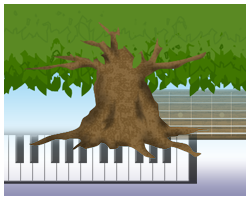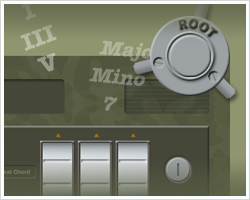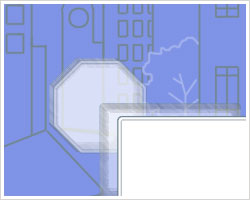When a triad is combined with a major or minor seventh interval, the resulting chord is called a seventh chord. The four most common types of seventh chords found in pop, jazz, blues, and R&B music are constructed as follows
| Seventh Chord | = | Triad Quality | + | Seventh Interval | Chord Degrees | Example |
|---|---|---|---|---|---|---|
| Major 7th chord: | Major Triad | Major 7th | Root, 3rd, 5th, 7th | Cmaj7 (C, E, G, B) | ||
| Dominant 7th chord: | Major Triad | Minor 7th | Root, 3rd, 5th, b7th | C7 (C, E, G, Bb) | ||
| Minor 7th chord: | Minor Triad | Minor 7th | Root, b3rd, 5th, b7th | Cm7 (C, Eb, G, Bb) | ||
| Minor 7th flat 5 chord: | Diminished Triad | Minor 7th | Root, b3rd, b5th, b7th | Cm7(b5) (C, Eb, Gb, Bb) |
Just as each note of a scale is given a number to represent its scale degree, each chord tone is assigned a chord degree to represent its position in the chord. Each chord degree always corresponds to scale degree of the major scale that starts with the root tone of the chord. For example, take a Dm7 chord, which has chord tones D, F, A, and C. Now look at the D major scale:
| D major: | 1 | 2 | 3 | 4 | 5 | 6 | 7 |
| D | E | F# | G | A | B | C# |
- We start with the root, which corresponds to "1" or the first scale degree: D.
- Next comes the b3rd, which is simply the "3" or third scale degree (F#) lowered by one half step, so the F# in the scale gets lowered to F natural.
- Then comes the 5th, which matches the "5" of the D Major scale.
- Finally we get the b7th by taking the "7" of the major scale (C#) and lowering it one half step to C.
You can see from the above example that any seventh chord can be constructed simply by following the formula for the particular type of seventh chord you want. Try constructing some of your own seventh chords. You can check yourself with the demo app below. First select a root tone, then press the button for the seventh chord you want to hear.
The intermediate and advanced levels of Tone Trees and Chord Locks will train you to identify these various seventh chords whenever you hear them. With Tone Trees, you will also learn to visualize the shapes of different seventh chords on piano or guitar.



